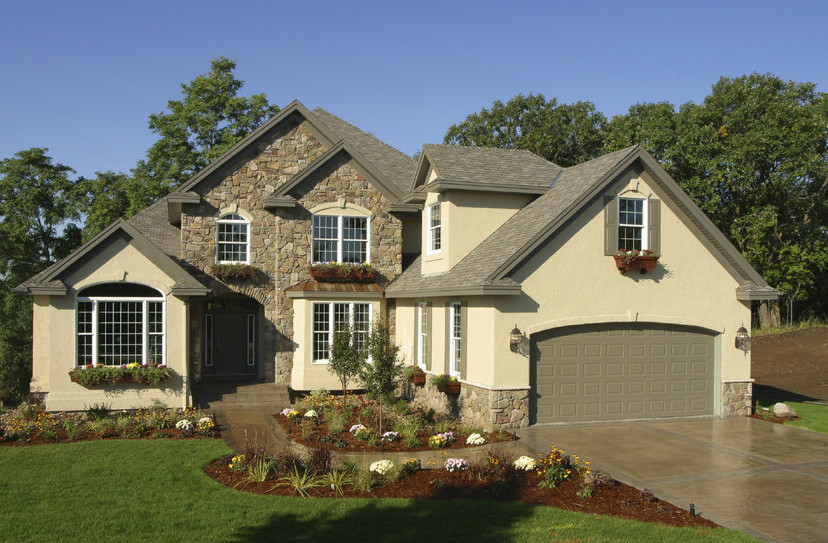In this issue:
- Soaring home values and surging buyer demand have led many to believe that we’re experiencing another housing bubble. However, conditions are vastly different from those preceding the 2008 market crash.
- Extremely low inventory, verified demand, and strong equity are all bolstering today’s housing market—and were lacking in the mid-2000s market. The absence of these factors largely contributed to the subsequent crash in 2008.
- If you’re on the fence about buying or selling a home, rest assured that the housing market is strong, and expected to stay that way. Contact Linda Craft & Team for more information or to get started buying or selling in the Triangle.
No, We’re Not in a Housing Bubble. This Is Why.

In 2020 alone, home values increased by about 10% nationwide. In 2021, they’re expected to climb an additional 5%. These sudden and steep increases have left many wondering if we’re in another housing bubble like the one preceding the 2008 housing market crash. However, the circumstances of today’s housing boom are vastly different from those of over a decade ago. Here are four ways today’s market is unique.
Housing supply is extremely low

One of the biggest differences between today’s market and that of the 2006 – 2008 market is the supply of homes. In real estate, we measure supply in months of inventory—that is, in how many months it would take to sell all the homes on the market based on current buyer demand. A normal or balanced supply is equal to about six months. Anything above that is considered a buyers market. Anything below, a sellers market.
Between 2006 and 2008, the housing supply increased from just over five months to 11 months. Of the 36 months in that time period, 27 of those months saw a housing supply over seven months.
In the past three years, housing supply has been under five months. It’s been under four months for 13 of the last 14 months, and for the last six months, housing supply has been under three months. Currently, housing supply sits at 1.9 months—an all-time low. This has led to a natural price increase.
Housing demand is real

The mid-2000s housing boom was largely driven by psychological factors—that is, people were over-optimistic about the future of the market. They bought houses at unrealistic prices based on an unfounded belief that they would continue to increase in value. When home prices dropped, demand for housing immediately followed suit, causing prices to collapse.
Today, housing demand is largely driven by an actual need for homes. Millennials, the largest generation in the country, have reached an age at which they are ready to buy. Additionally, the recent health crisis has caused homeowners to reevaluate their needs in a home. This, in turn, has led many to begin the search for a home better suited for working from home, schooling from home, and spending more time at home in general. Suburban areas like Raleigh have seen an increase in former city-dwellers no longer required to commute to the office every day.
Mortgages are available only to properly qualified buyers

One of the biggest problems with the mid-2000s market was the availability of home loans. The mortgage industry bolstered the buying frenzy by making mortgages extremely easy to obtain, regardless of whether or not the buyer was qualified or had the means to pay it back.
The Mortgage Credit Availability Index, published by the Mortgage Bankers Association, rates the ease of obtaining a mortgage at any given time. The higher the index, the easier it is to obtain a mortgage. Prior to the housing boom, the index stood just below 400. In 2006, the index hit a high of 868, illustrating that it was easier than ever before to qualify for a mortgage. Today, the index sits at just 122.5—which means only qualified purchasers are able to obtain a loan.
Households have plenty of equity today

During the housing boom, millions of homeowners across the country made the mistake of borrowing money against their homes in cash-out refinances. Because home prices were soaring and loans were easy to come by, many felt comfortable using their home’s equity to make large purchases they could not have otherwise afforded. In 2007, Americans pulled out $824 billion dollars in equity. When housing prices fell, that left many homeowners with no or even negative equity.
Today, cash-out refinance volume is less than a third of what it was in the time leading up to the market crash. In fact, we are seeing unprecedented levels of home equity. According to the Census Bureau, over 38% of owner-occupied homes are owned outright. An additional 17.8 million residential properties are considered equity-rich, with loans of 50% or less of the estimated market value. That’s about one in three mortgaged homes in the US. If we combine owned homes with equity-rich homes, we get a total of 56.7% of all homes in the US with a minimum of 50% equity.
The Housing Market Is Strong—It’s Not a Bubble!
The bottom line: Today’s housing market is nothing like the 2006 housing bubble. Home values are strong, not inflated. Buyer demand is founded in actual need, not a perceived-value frenzy. Mortgages are much more difficult to obtain, ensuring only qualified buyers are able to procure them. And over half of our country’s homes are equity-rich. The situation is very different from 2008.
If you’re thinking about buying or selling a home in the Triangle, the time is right! The housing market is strong and offers benefits for both buyers and sellers. And Linda Craft & Team is here to help you make a move. Contact us today at 919-235-0007 and let us put our 350+ combined years of experience to work for you.
